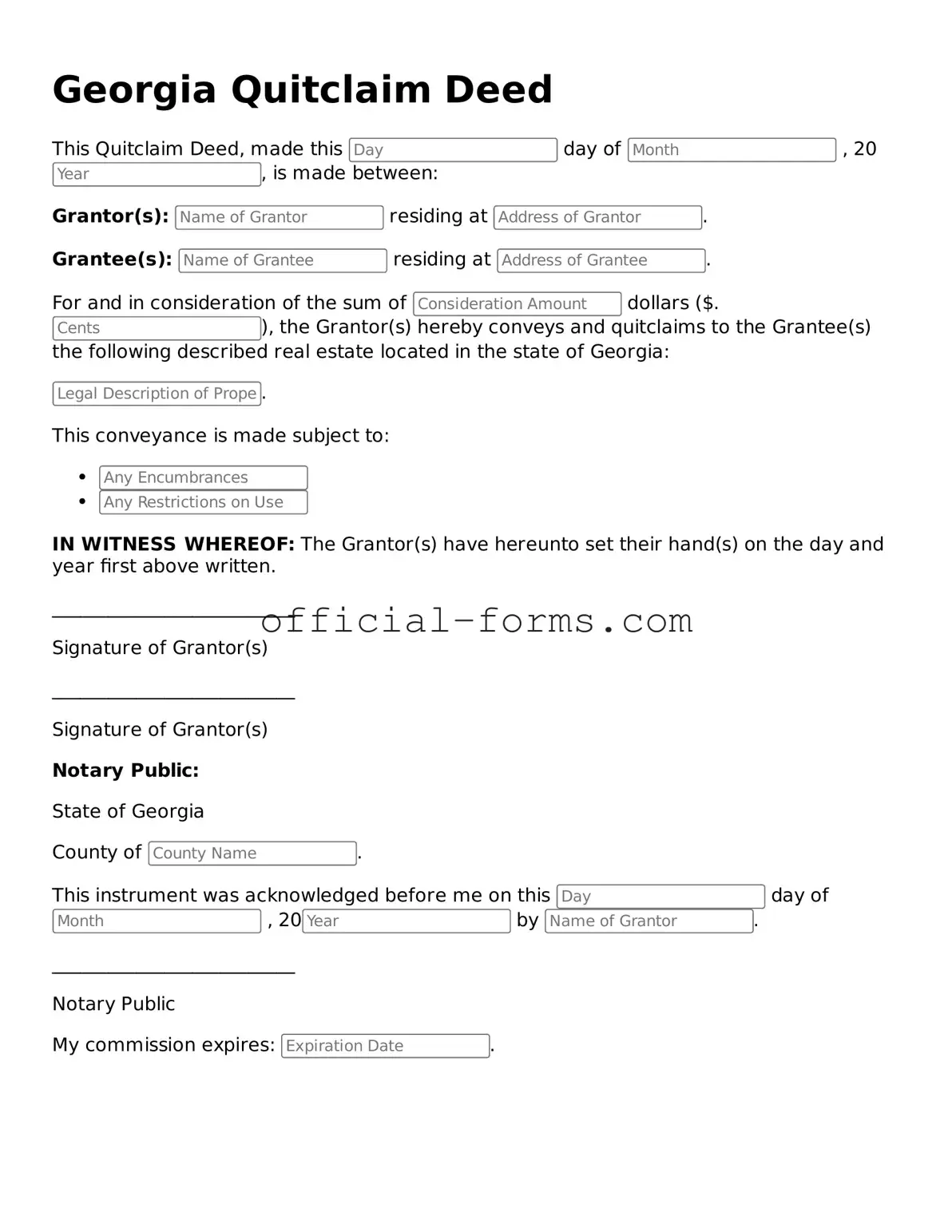Filling out a Georgia Quitclaim Deed form can seem straightforward, but many individuals make common mistakes that can lead to complications down the line. Understanding these pitfalls can help ensure that the process goes smoothly. One frequent error is failing to include all required parties. When transferring property, it is essential to list both the grantor (the person giving the property) and the grantee (the person receiving the property). Omitting one of these names can render the deed invalid.
Another mistake often encountered is incorrect property descriptions. The property must be accurately described to avoid confusion or disputes later. This includes specifying the correct parcel number and providing a clear physical description. If the details are vague or incorrect, it may lead to issues with title claims or ownership rights.
Many individuals also overlook the need for signatures. Both the grantor and, in some cases, the grantee must sign the deed for it to be valid. Additionally, signatures should be notarized. Failing to do so can result in the deed being rejected by the county clerk’s office.
Inaccurate dates can also cause problems. The date of execution must be clearly indicated. If this date is missing or incorrect, it may affect the legal standing of the deed. Furthermore, some people neglect to check local requirements. While the Quitclaim Deed form is standardized, certain counties in Georgia may have specific regulations or additional documentation that must accompany the deed.
Another common mistake is not providing the correct consideration amount. Even though a Quitclaim Deed often transfers property without monetary exchange, it is still necessary to state a nominal consideration amount, such as $10. This is a legal requirement that should not be overlooked.
Some individuals fail to record the deed after it has been executed. Recording the Quitclaim Deed with the appropriate county office is crucial for protecting ownership rights. If the deed is not recorded, it may lead to complications in proving ownership in the future.
Inconsistent information can also lead to issues. For instance, if the names or addresses of the parties involved do not match other legal documents, it may raise questions about the validity of the deed. Therefore, double-checking all information for consistency is essential.
Additionally, people sometimes forget to include a legal description of the property in the correct format. Georgia law requires specific language and structure for the legal description, and failing to adhere to these standards can result in the deed being deemed insufficient.
Lastly, many individuals do not seek assistance when needed. While the Quitclaim Deed form is accessible, consulting with a real estate professional or attorney can help avoid mistakes. Their expertise can provide valuable insights and ensure that all aspects of the deed are correctly addressed.
